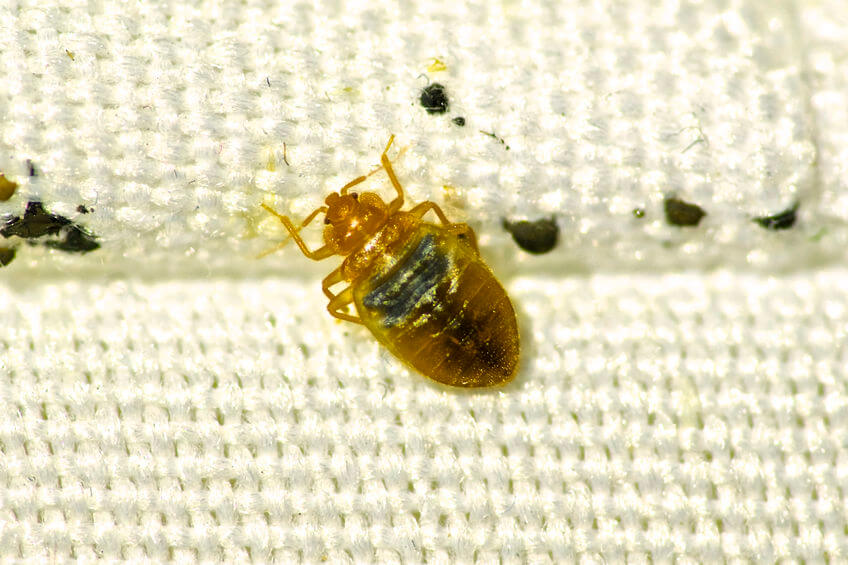A1 Bed Bug Exterminator Houston: Reliable Treatment Providers
A1 Bed Bug Exterminator Houston: Reliable Treatment Providers
Blog Article
Comprehending the Lifecycle of Bugs for Targeted Control Methods
Understanding the lifecycle of parasites is an essential aspect of reliable pest administration strategies. With a deeper understanding of how parasites advance and prosper, customized control methods can be developed to resolve certain points in their lifecycle, eventually leading to more successful pest management end results.
Significance of Recognizing Insect Lifecycle
Recognizing the lifecycle of bugs is necessary for developing efficient and targeted control methods in insect monitoring. By comprehending the different phases a pest experiences from egg to grownup, insect control experts can recognize weak spots in the lifecycle where intervention can be most successful. Understanding when larvae are most energetic can aid figure out the optimum timing for applying larvicides. Additionally, comprehending the life expectancy of a parasite varieties can assist in predicting population growth patterns and prospective invasion dangers.
Moreover, identifying the particular environmental conditions necessary for each stage of the pest's lifecycle can guide choices on habitat modification or exclusion techniques to decrease and disrupt the lifecycle insect populaces. This knowledge enables pest management professionals to implement proactive actions as opposed to counting only on reactive treatments, leading to even more long-term and lasting bug control services. Inevitably, a comprehensive understanding of pest lifecycles encourages bug control specialists to tailor their approaches successfully, taking full advantage of and minimizing ecological effects control outcomes.
Trick Stages in Pest Growth
To successfully carry out targeted control approaches in parasite administration, a vital facet exists in adequately determining and recognizing the vital phases in pest growth. Parasite growth commonly is composed of a number of crucial stages that are essential for their lifecycle and administration.

Susceptabilities in Pest Lifecycle
Throughout the numerous stages of an insect's lifecycle, distinct susceptabilities arise that can be strategically targeted for efficient control steps (A1 bed bug removal houston). One vital vulnerability exists in the egg stage, where pests are usually a lot more vulnerable to particular insecticides or organic control agents due to their soft external shell, making them less complicated targets for intervention. Understanding these susceptabilities in the parasite lifecycle is vital for developing effective and precise control approaches that efficiently take care of insect populaces while reducing ecological impact.
Applying Targeted Control Steps

Executing targeted control procedures typically involves a multi-faceted method. This might consist of environment alteration to make the environment less congenial to parasites, such as eliminating standing water for insect control or securing entrance factors for rats. In addition, organic control approaches can be made use of, where natural predators or microorganisms are presented to keep parasite populations in check.
Integrated Bug Management (IPM) approaches that incorporate various control steps in a coordinated and lasting manner navigate to this site are often the most reliable in accomplishing long-term bug management objectives. By carrying out targeted control measures based on a thorough understanding of pest lifecycles, bug populations can be properly controlled while decreasing threats to human health and wellness and the setting.
Improved Pest Administration Practices

In addition, the incorporation of biological control agents, such as all-natural killers or virus of pests, can aid decrease reliance on chemical pesticides and promote a more balanced environment. Carrying out physical obstacles and traps can likewise belong to enhanced insect management practices, offering safe and targeted remedies for parasite control. Additionally, making use of pheromones and various other semiochemicals can disrupt pest breeding patterns and communication, bring about minimized pest populations over time.
Verdict
Finally, comprehending the lifecycle of pests is important for effective pest monitoring methods. By identifying key phases in insect development and susceptabilities in their lifecycle, targeted control procedures can be carried out to reduce pest populaces. Enhanced parasite administration practices can aid minimize the reliance on broad-spectrum chemicals and promote even more lasting and eco-friendly pest control techniques. This understanding plays an essential role in keeping healthy ecosystems and farming productivity.
Recognizing the lifecycle of parasites is important for establishing effective and targeted control techniques in parasite administration. By comprehending the various stages a pest goes via from egg to grownup, pest control specialists can identify susceptible factors in the useful source lifecycle where treatment can be most effective. Ultimately, a complete understanding of bug lifecycles encourages parasite control professionals to tailor their techniques successfully, decreasing ecological influences and maximizing control results.
By executing targeted control actions based on a thorough understanding of pest lifecycles, bug populations can be efficiently managed while decreasing dangers to human health and wellness and the atmosphere.
By determining essential stages in pest advancement and susceptabilities in their lifecycle, targeted control measures can be carried out to minimize bug populations.
Report this page